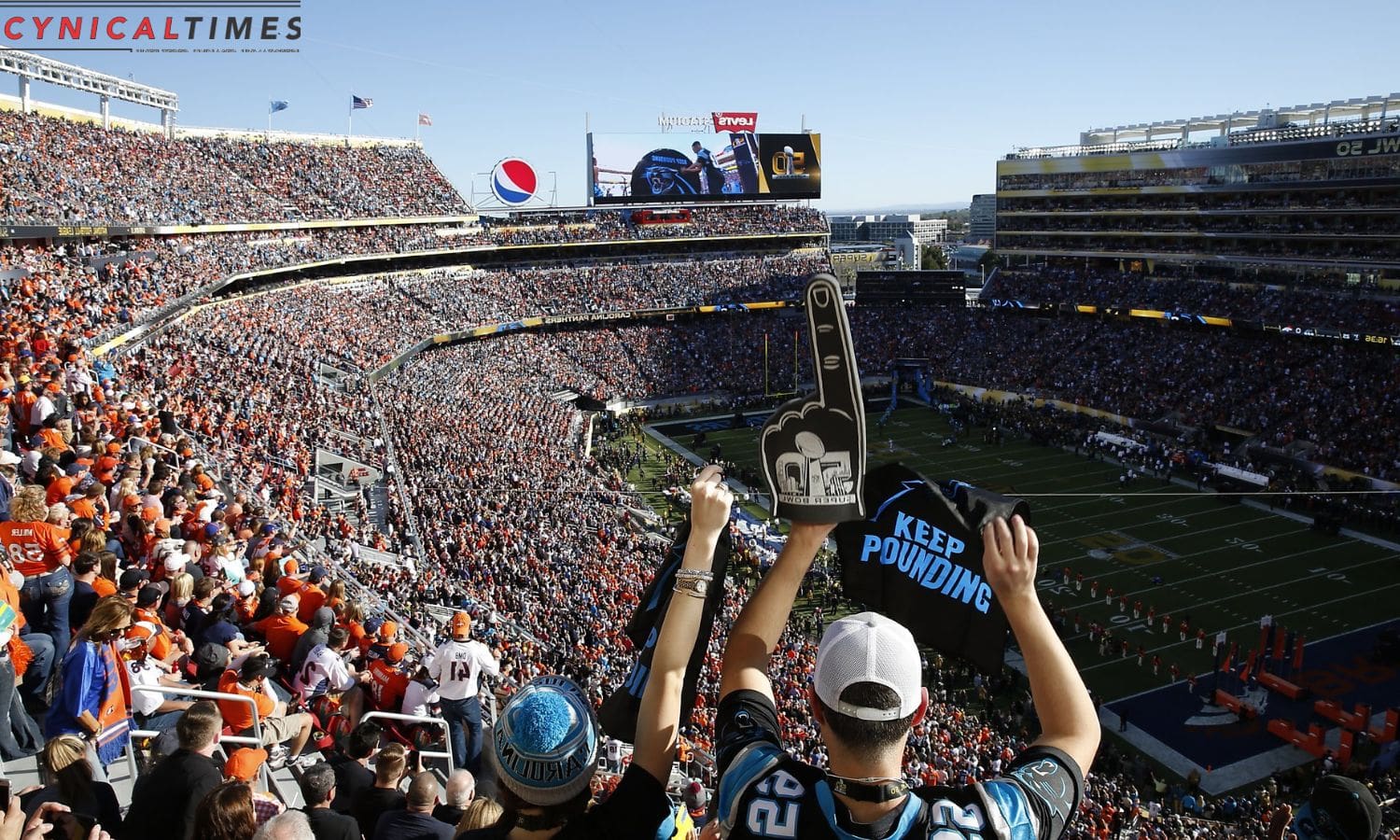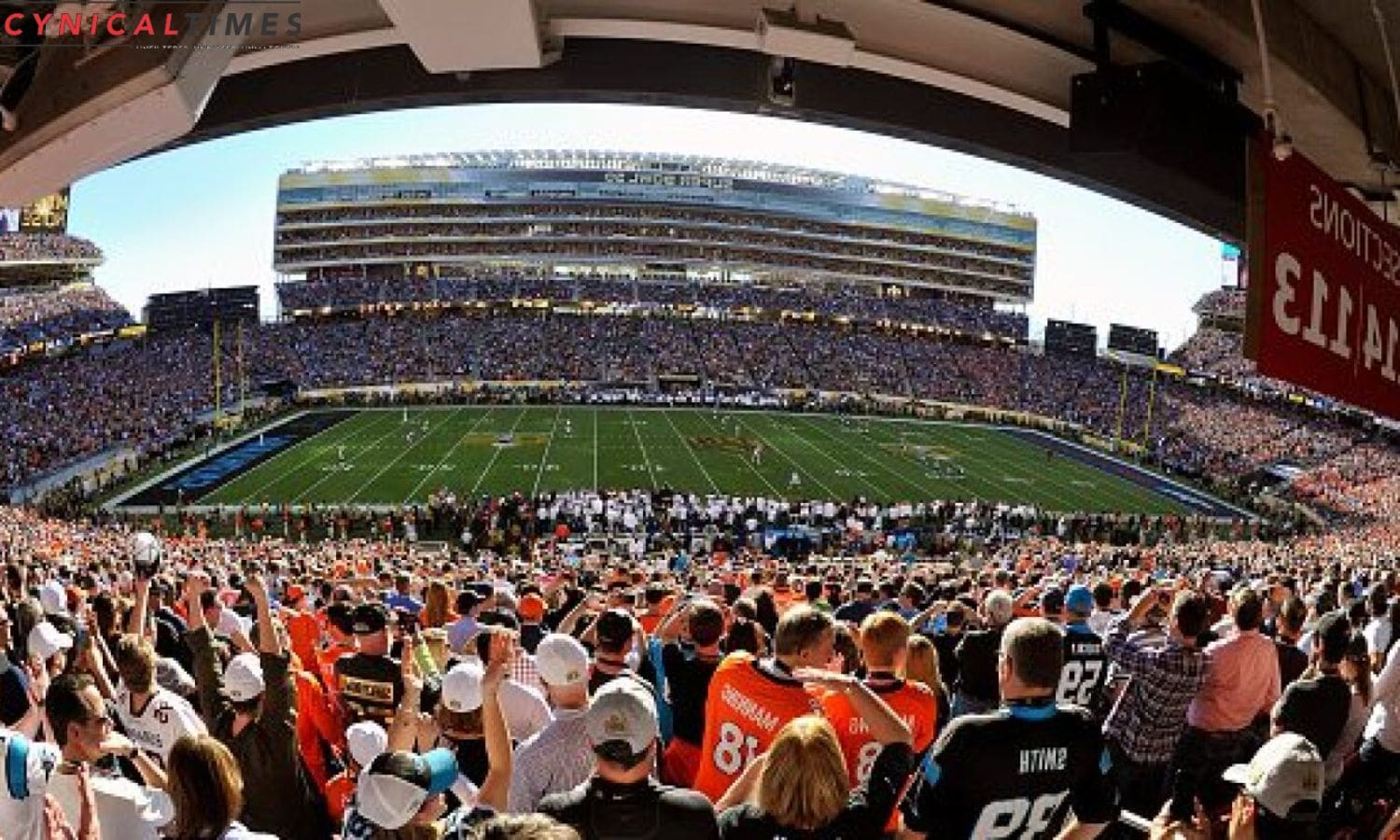South Bay Economic Game Plan: In anticipation of Super Bowl 2026 returning to Levi’s Stadium, local leaders in the South Bay are engaging in crucial conversations about maximizing the economic impact of this highly anticipated event.
The concerns and strategies being considered by the Bay Area Host Committee, as they aim to attract attention and revenue to San Jose.
By examining the disparities observed during the 2016 Super Bowl, this piece aims to provide an analytical and informative exploration of the collaboration versus competition strategies for success.
Key Takeaways Of South Bay Economic Game Plan
- Super Bowl 2026 will be hosted at Levi’s Stadium in Santa Clara, presenting an opportunity for the region to showcase its economic potential and attract visitors from around the world.
- Local leaders in the South Bay have expressed concerns about the uneven impact of the Super Bowl and discussions have been held to ensure a more equitable distribution of economic benefits in 2026.
- The Bay Area Host Committee is focusing on promoting San Jose and its attractions to generate revenue for the city, while recognizing the challenges posed by San Francisco’s infrastructure advantages.
- The economic impact disparities observed during the 2016 Super Bowl highlight the need for collaborative regional planning, investment in infrastructure, and promotion of local businesses to ensure a more equitable distribution of economic benefits in 2026.


Also Read : San Jose Safe Parking Solution Takes a Hit With Delays
Setting the Stage: Super Bowl 2026 Returns to Levi’s Stadium
Regularly hosted at Levi’s Stadium in Santa Clara, the Super Bowl is set to return in 2026, marking the second time in a decade that this iconic event will grace the South Bay region.
The upcoming Super Bowl is already generating excitement and anticipation among football fans and local businesses alike. Levi’s Stadium, with its state-of-the-art facilities and prime location, is the perfect venue to host such a prestigious event.
The return of the Super Bowl to the South Bay presents a unique opportunity for the region to showcase its economic potential and attract visitors from around the world.
With lessons learned from the 2016 Super Bowl, local leaders are committed to ensuring a more equitable distribution of benefits this time around, ensuring that all communities in the South Bay can reap the rewards of hosting this global extravaganza.


Uneven Impact: Concerns and Conversations Among Local Leaders
Local leaders in the South Bay have engaged in discussions and expressed concerns about the uneven impact of the Super Bowl, prompting a need for collaborative efforts to ensure a more equitable distribution of economic benefits in 2026.
As revealed in email conversations obtained by San José Spotlight, there are varying opinions on how to approach the upcoming event. Some officials propose adopting competitive strategies to undercut San Francisco, while others advocate for a more collaborative approach aimed at enhancing the prosperity of the entire region.
The concerns stem from the previous Super Bowl held in 2016, where the economic impact was not evenly distributed.
Bay Area Host Committee’s Focus: Attracting Attention and Revenue to San Jose
The Bay Area Host Committee aims to draw attention and generate revenue for San Jose by actively promoting the city’s attractions and offerings. Recognizing the challenges faced in 2016, the committee is determined to improve coverage and events in the South Bay.
While San Francisco may have infrastructure advantages for large events, the committee is focused on showcasing the unique qualities that San Jose has to offer. With its vibrant arts scene, diverse culinary offerings, and technological innovation, San Jose has the potential to captivate visitors and leave a lasting impression.
Economic Impact Disparities: Lessons from the 2016 Super Bowl
Analyzing the economic impact disparities of the 2016 Super Bowl, the South Bay Economic Game Plan explores the lessons learned and strategies to maximize the benefits for all regions involved.
The figures reveal significant disparities in the distribution of economic benefits among Santa Clara, San Jose, and San Francisco. Santa Clara received only 7% of the estimated $240 million impact, while San Jose received 12% and San Francisco received a staggering 57%. These disparities highlight the challenges faced by different regions in capitalizing on major events like the Super Bowl.
To address this, the South Bay Economic Game Plan proposes the following strategies:
- Collaborative regional planning: Encouraging cooperation and coordination among all regions to ensure a more equitable distribution of economic benefits.
- Investment in infrastructure: Allocating resources to improve transportation, accommodation, and entertainment facilities in all regions to attract visitors and increase their spending.
- Promoting local businesses: Supporting and promoting local businesses in all regions to ensure they benefit from the increased tourism and spending brought by the Super Bowl.
Strategies for Success: Collaboration vs. Competition for Super Bowl 2026
In the pursuit of maximizing the benefits of Super Bowl 2026, the South Bay Economic Game Plan explores the effectiveness of collaboration versus competition.
The strategies being considered for the event include suggestions to collaborate on packages and undercut San Francisco’s sales and hotel taxes. This approach aims to create a unified effort among stakeholders, pooling resources and expertise for a more comprehensive and impactful outcome.
On the other hand, competition can also be a driving force for success, as it fosters innovation and pushes organizations to strive for excellence. It can lead to the development of unique offerings and experiences that set the South Bay apart from other host cities.
Ultimately, a combination of collaboration and competition may prove to be the winning formula for Super Bowl 2026, ensuring maximum economic impact and lasting growth for the region.


Conclusion Of South Bay Economic Game Plan
The return of the Super Bowl to Levi’s Stadium in 2026 presents both opportunities and challenges for the South Bay region.
While there are concerns about the uneven impact and economic disparities associated with hosting such a large-scale event, the focus of the Bay Area Host Committee on attracting attention and revenue to San Jose is promising.
By adopting collaborative strategies and learning from past experiences, the region can maximize the benefits and ensure a successful Super Bowl 2026.

